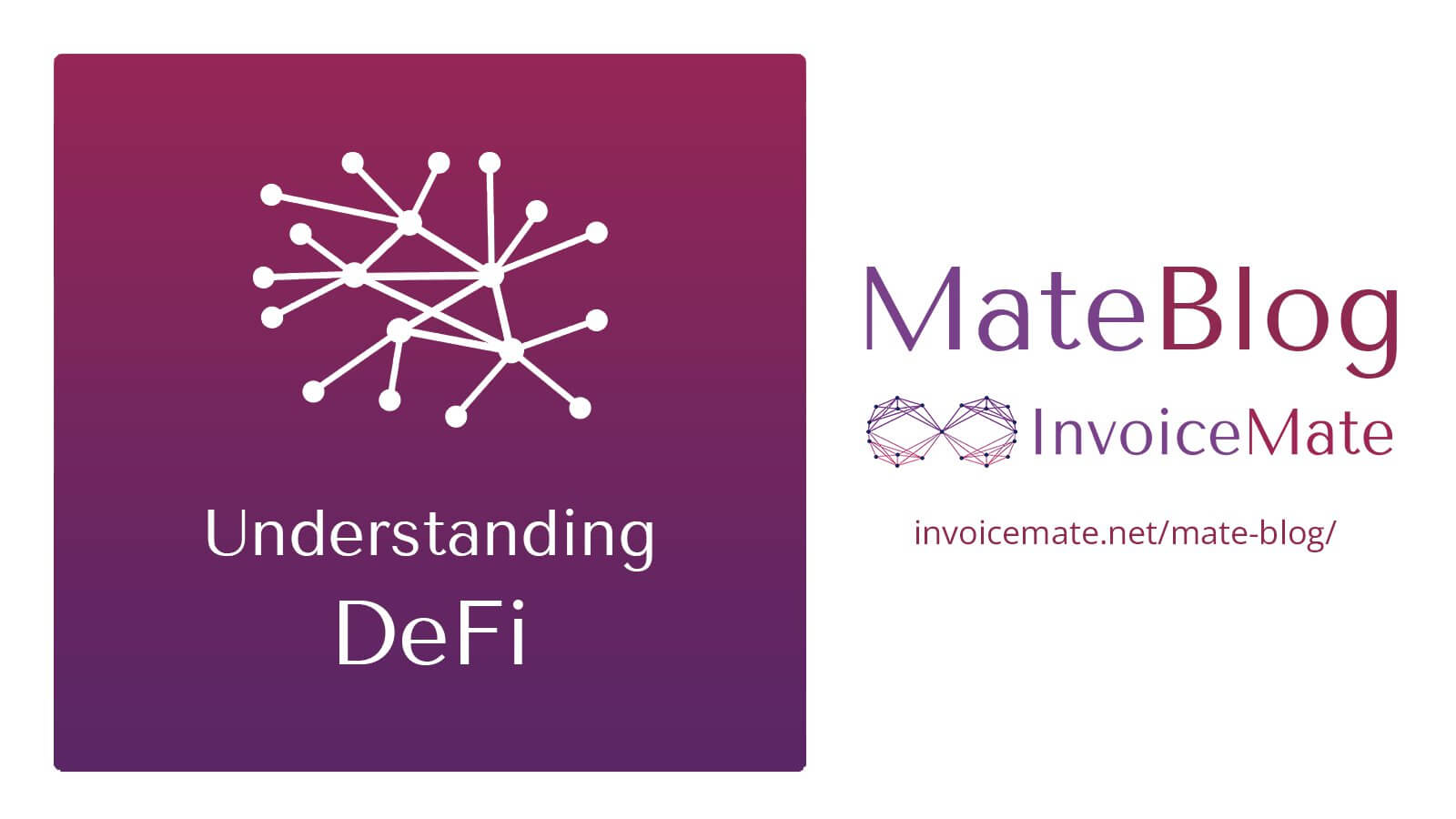Connect With Us

Defi invoice Financing is an abbreviation for Decentralized invoice Financing, and DeFi is an abbreviation for Decentralized Finance. DeFi is a mechanism for making financial products available on a decentralized blockchain network that is open to the public. In the DeFi system, instead of going via intermediaries like banks or brokerage houses, anyone can utilize them directly. The major difference in DeFi is that unlike Financial institutions, where a person is required to submit some kind of identity documents like government ID, Tax Number, Passport, or Social Security Number, No such document is required for financial transactions on DeFi. Defi invoice Financing is an abbreviation for Decentralized invoice Financing.
DeFi can be termed as an ecosystem of trustless financial services over blockchain without 3rd party or central administration and intervention.
Elaborating further, DeFi is a system where blockchain-based software facilitates peer-to-peer financial transactions between buyers, sellers, lenders, and borrowers. These transactions can be peer-to-peer or with a software-based middleman. On the other hand, a traditional digital transaction system involves the third party even at the most basic level like paying for a cup of coffee. That third party not only controls the transaction but also has the actual control of the funds.
This decentralization is achieved through the utilization of multiple technologies and protocols. The blockchain, software, smart contracts, are among those used for this purpose. Smart contracts play a vital role in decentralized finance. Smart contracts make it possible to enforce automated implementation of the terms decided between peers. Irrespective of the software used, DeFi enables peer-to-peer financial transactions by removing financial intermediary bodies. Like cryptocurrency platforms, anybody with an active internet connection can access DeFi services.
Although the trend for DeFi is growing at a good pace, the industry is still in its early development phase. The regulations and oversight mechanisms are still almost absent.
In the nutshell, DeFi is a financial system aimed at removing the intermediary or a middle party by facilitating peer-to-peer financial transactions between the parties.
DeFi components consist of cryptocurrency (stablecoins mostly), software stack, and use cases.
The industry is still at a premature level and requires lots of improvement in infrastructure and framework.
DeFi is not the first financial system utilizing technology, banks, and financial institutions are using technology for the last many decades. The major difference between DeFi and the traditional financial system lies in the way they make use of technology. The traditional and established financial system uses technology as a facilitator or a medium for transaction whereas the rest of the responsibilities lie on the institutions. Jurisdiction, standardization, and management of other mechanisms rest with the financial institutions. In comparison when it comes to DeFi, it brings technology to the front by putting most of the stake on technology. It is done through public blockchain, open-source software protocols.
The modern days’ financial system works on a ‘Hub and Spoke’ model. The main centers of financial activities like London, New York, and Shanghai act like hubs in the systems whereas regional centers like Milan, Dubai, and Manila act as spokes. Furthermore every spoke or regional center also acts as a hub to its regional spokes. This way most of the system is interdependent. This system though working for almost a century but is prone to many flaws and is unable to cater to the new requirements. In the centralized system, the bank or the financial institution can deny the provision of services to any individual. It’s the sole discretion of the institution to provide services. Even after granting the services, the financial institution can block payments without consulting the individual or the organization. Even the countries can be denied financial services. This mechanism also involves the higher cost of transactions. The money is also held with the institutions and not the actual owners.
The philosophy behind the decentralized financial model is to replace intermediary institutions with a trustless peer-to-peer mechanism. The purpose is to provide financial services to anyone, anywhere irrespective of their ethnicity, and geography. DeFi services are mostly built on the public blockchain. The DeFi model offers much more user control over their money with wallets and/or user-oriented services. Decentralized financial services are greatly cost-effective.
Components of DeFi
Simply speaking DeFi consists of
- The Engine – Blockchain
- The Assets
- The Protocol
- The Application
Technically, the DeFi stack consists of four layers.
- Settlement Layer
- Protocol Layer
- Application Layer
- Aggregation Layer
Due to its inherent ease and cost-effectiveness, it can be safely said that with the evolution of regulatory mechanisms, the DeFi model will increase its footprint in the global financial arena. If properly placed, it can be a very effective financing model for those segments of the business that are unable to take advantage of the conventional financing instruments.
